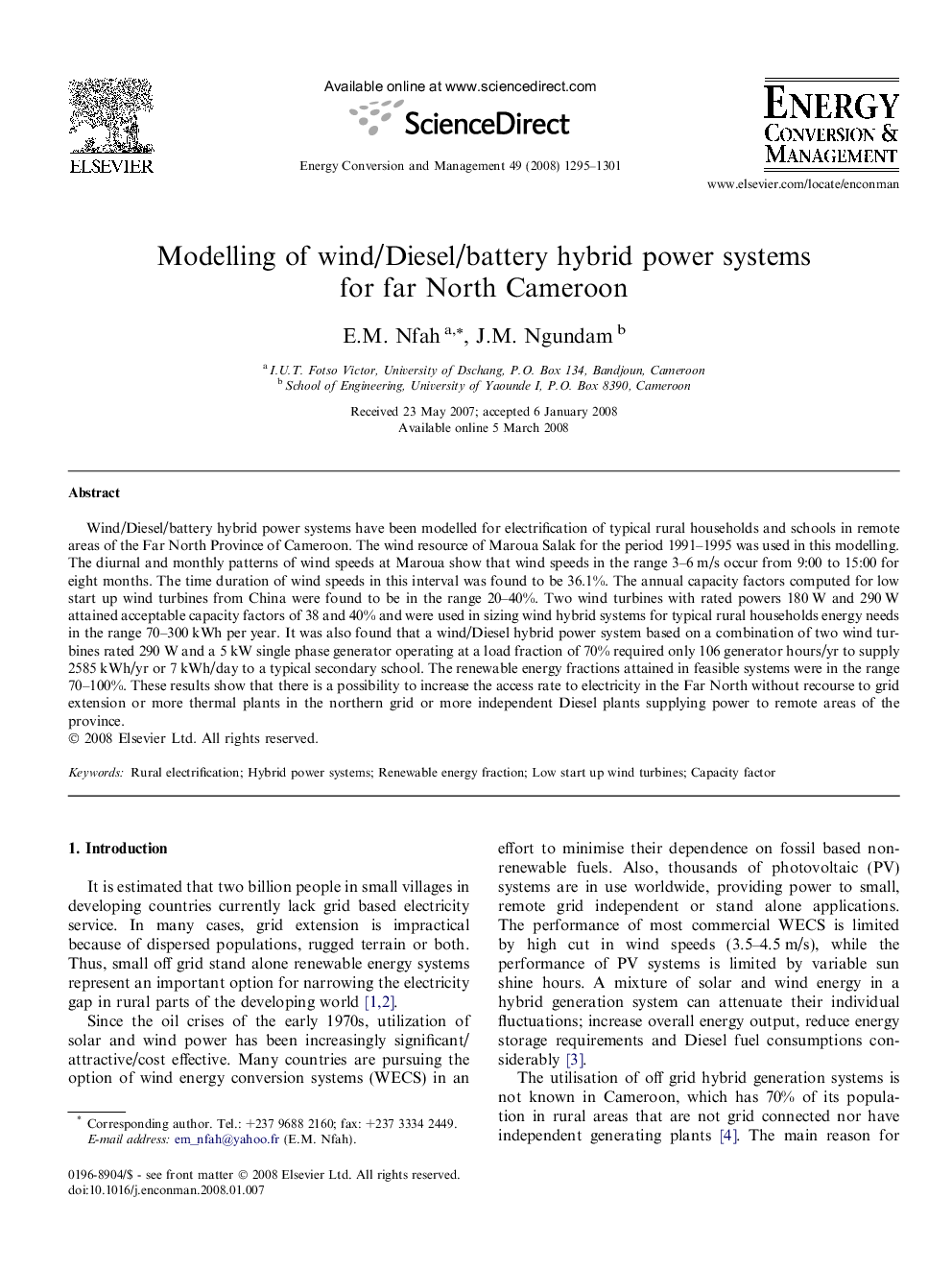| Article ID | Journal | Published Year | Pages | File Type |
|---|---|---|---|---|
| 772765 | Energy Conversion and Management | 2008 | 7 Pages |
Wind/Diesel/battery hybrid power systems have been modelled for electrification of typical rural households and schools in remote areas of the Far North Province of Cameroon. The wind resource of Maroua Salak for the period 1991–1995 was used in this modelling. The diurnal and monthly patterns of wind speeds at Maroua show that wind speeds in the range 3–6 m/s occur from 9:00 to 15:00 for eight months. The time duration of wind speeds in this interval was found to be 36.1%. The annual capacity factors computed for low start up wind turbines from China were found to be in the range 20–40%. Two wind turbines with rated powers 180 W and 290 W attained acceptable capacity factors of 38 and 40% and were used in sizing wind hybrid systems for typical rural households energy needs in the range 70–300 kWh per year. It was also found that a wind/Diesel hybrid power system based on a combination of two wind turbines rated 290 W and a 5 kW single phase generator operating at a load fraction of 70% required only 106 generator hours/yr to supply 2585 kWh/yr or 7 kWh/day to a typical secondary school. The renewable energy fractions attained in feasible systems were in the range 70–100%. These results show that there is a possibility to increase the access rate to electricity in the Far North without recourse to grid extension or more thermal plants in the northern grid or more independent Diesel plants supplying power to remote areas of the province.
